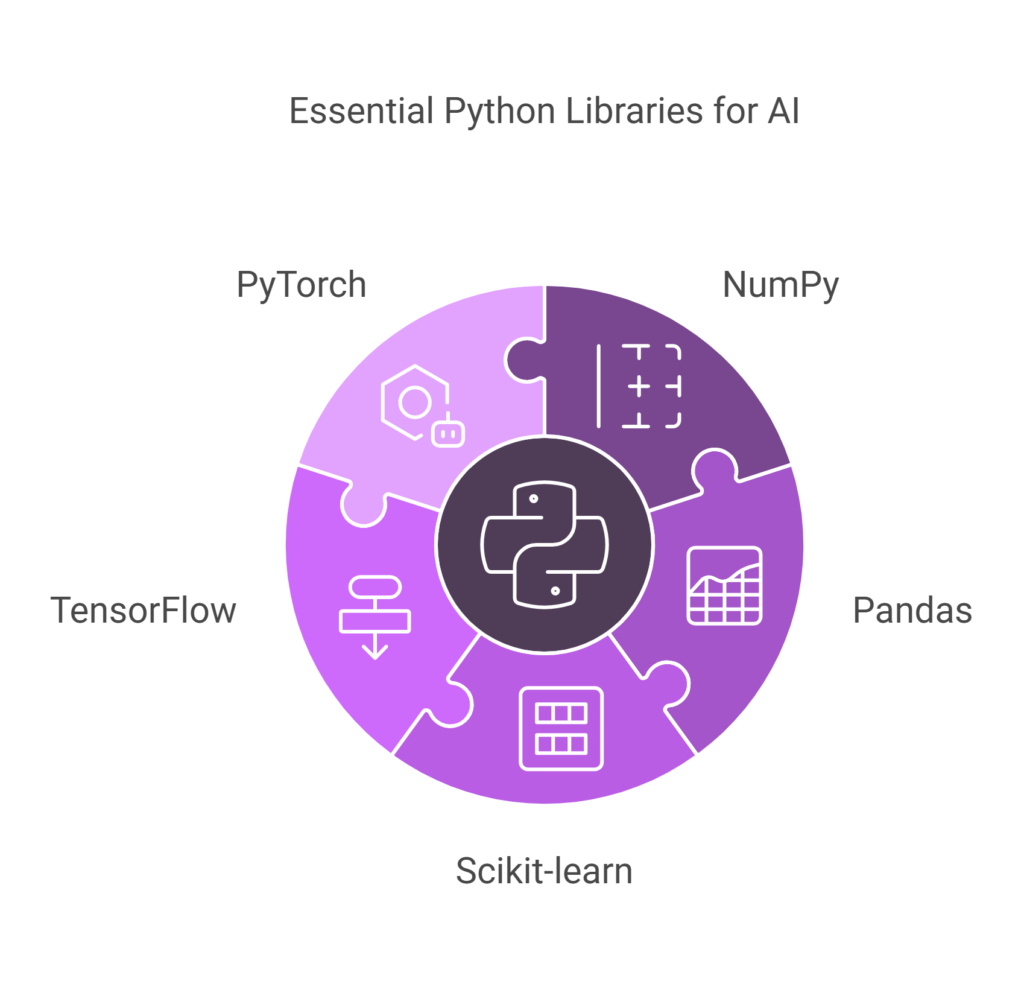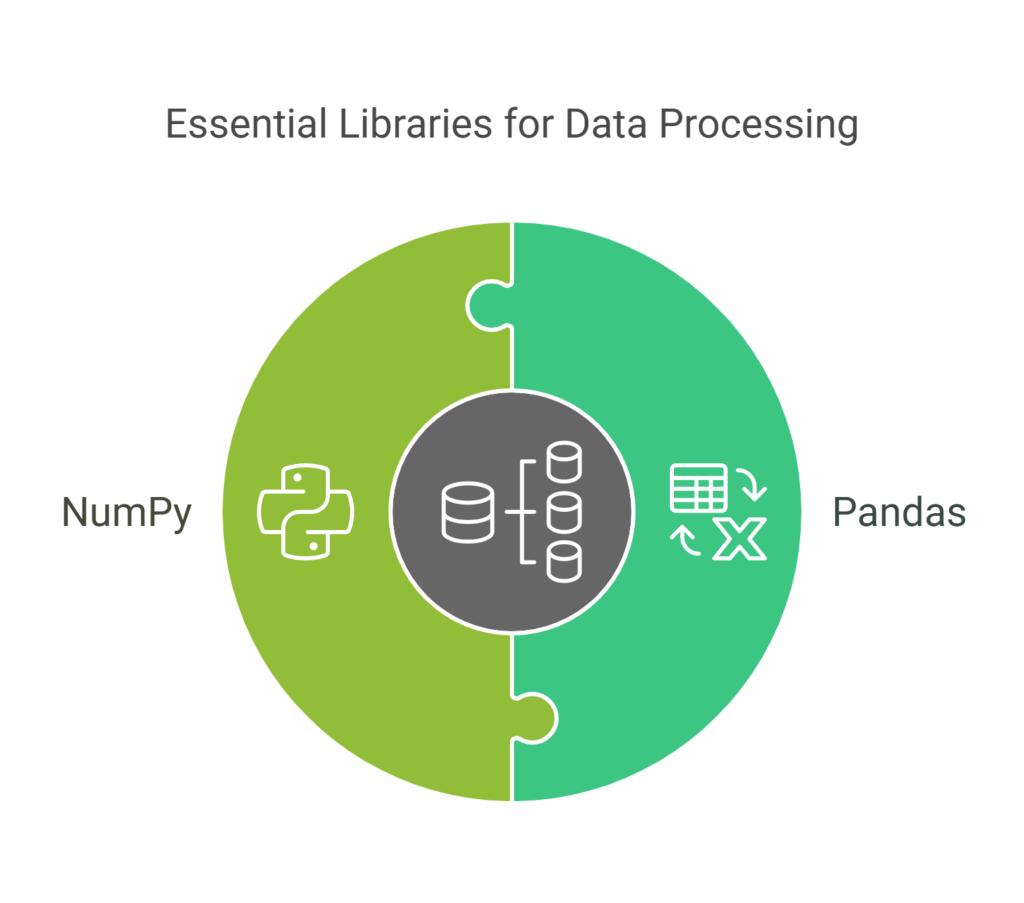Machine learning and deep learning are growing exponentially, and Python is the language of choice for both enthusiasts and professionals. As we enter 2025, the ecosystem of libraries in Python related to ML and DL is richer than ever and offers tools for data preprocessing, algorithm development, and deployment. Here’s an overview of the top Python libraries for machine learning and deep learning in 2025.

TensorFlow (Deep Learning)
TensorFlow was a prime DL leader for several years and was developed by Google Brain. It is an open-source framework that is well-suited for numerical computation and large-scale machine-learning tasks. It is particularly perfect for deep learning projects, and tools are integrated with it to create and train neural networks.
Key Features:
- Supports high-level APIs, such as Keras, and low-level operations thus providing utmost flexibility.
- Seamless deployment on a range of platforms from mobile to edge devices.
- Comprehensive community support with regular updates for state-of-the-art ML and DL functionality.
PyTorch (Deep Learning)
PyTorch, developed by Facebook’s AI Research lab, has gained the favor of researchers and practitioners. With its dynamic computation graph, PyTorch allows easy debugging and experimenting with neural networks. Its flexibility and ease of use have made it the backbone of many deep learning projects.
Key Features:
- Dynamic graph computation for intuitive model development.
- Native support for GPU acceleration.
- A good set of libraries such as TorchVision and TorchText for specific applications.
- Strong linkage with research and production workflows.
Scikit-learn (Machine Learning)
Scikit-learn is a mainstay in the ML toolkit for those who work on classical machine learning problems. Built on top of NumPy, SciPy, and matplotlib, it offers simple and efficient tools for data mining and analysis.
Key Features:
- A broad set of supervised and unsupervised learning algorithms.
- Model evaluation tools, feature selection, and data preprocessing tools
- Easy to combine with other libraries in Python.
XGBoost (Machine Learning)
XGBoost is one of the gradient-boosting powers in the space of machine learning, especially well known for its excellent performance with structured data problems. Its exceptional speed and robust performance have made it a favorite among data scientists, especially in competitive environments like Kaggle.
Key Features:
- Highly efficient implementation of gradient boosting
- Support for parallel processing and GPU acceleration.
- Tools for feature importance visualization and interpretation.
LightGBM (Machine Learning)
LightGBM is another gradient-boosting framework that has gained popularity for its speed and accuracy. Developed by Microsoft, it is particularly well-suited for large datasets and high-dimensional data.
Key Features:
- Faster training compared to traditional boosting methods.
- Ability to handle missing values and categorical features directly.
- Built-in support for distributed training.
Pandas and NumPy (Foundational Libraries)

The libraries Pandas and NumPy are not specifically machine learning or deep learning, but very important for data manipulation and numerical computations. Those libraries provide a toolset required for data preprocessing, which forms a critical stage in any pipeline for ML and DL.
Key Features
- Pandas Library: Efficient handling of structured and unstructured data
- NumPy: High-performance operations for numerical values
- Seamless integration with other ML and DL libraries.
OpenCV – Computer Vision, Deep Learning
OpenCV is one of the indispensable libraries used in the processing of computer vision. The functions of the library for image and computer vision include vast features and range in operations for handling projects on visual data.
Features:
- Strong image and video processing
- It integrates deep learning frameworks, including TensorFlow and PyTorch.
- It supports various object detection and face recognition applications
Hugging Face Transformers (Deep Learning)
Hugging Face has revolutionized the face of natural language processing with its Transformers library. The library has done this by bringing well-trained models for text classification and translation tasks. In 2025, Hugging Face will continue to be leading in NLP innovation.
Key Features:
- Use of state-of-art models such as BERT, GPT, and T5.
- Easy APIs to fine-tune and deploy models.
- Extensive documentation and community resources.
Fastai (Deep Learning)
Fastai is built on top of PyTorch and simplifies the process of building deep learning models. It’s designed to make state-of-the-art deep learning accessible to everyone.
Key Features:
- High-level abstractions for common deep learning tasks.
- Pre-trained models for transfer learning.
- Comprehensive documentation and tutorials.
Keras (Deep Learning)
Keras is an advanced deep-learning library that acts like the interface to TensorFlow. It has become very popular because it works smoothly and is easy to handle. Now, both beginners and specialists use this platform as a priority and achieve a lot with its help in model development in 2025. User-friendly APIs used for rapid prototyping and testing.
Key Features:
- The support for recurrent, convolutional, and dense neural networks.
- Scalable integration with TensorFlow’s backend.
Conclusion
The ecosystem for Python in 2025 for machine learning and deep learning is healthy and gives everyone an expansive selection of libraries that are tailored to every aspect of the ML and DL workflow. Foundational tools are indispensable – NumPy and Pandas, while advanced specialized libraries include TensorFlow, PyTorch, and Hugging Face Transformers. As ML and DL technologies advance, these libraries empower developers and researchers to innovate and push the boundaries further in making machine learning and deep learning more accessible and impactful than ever before.


